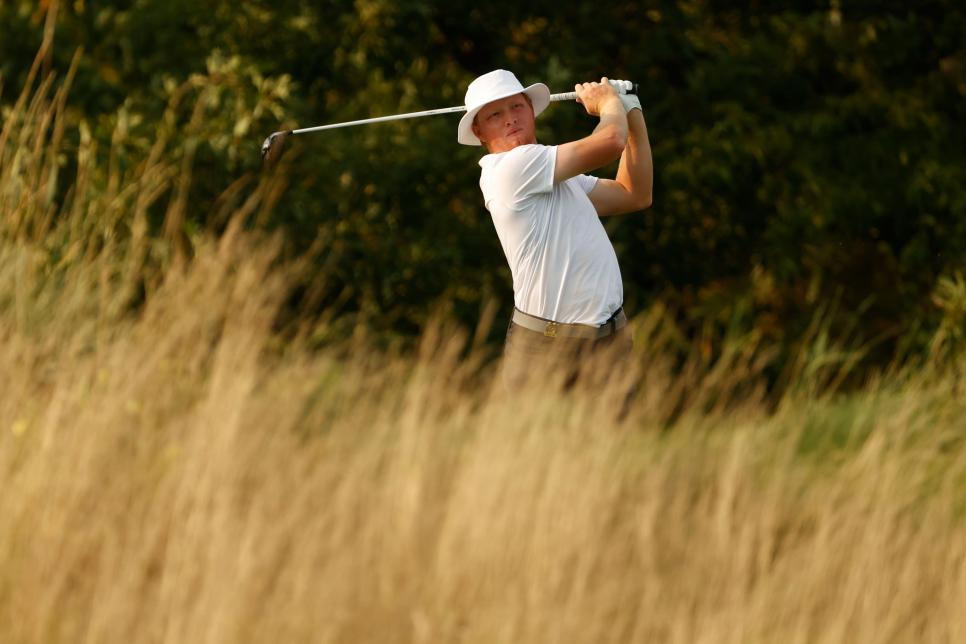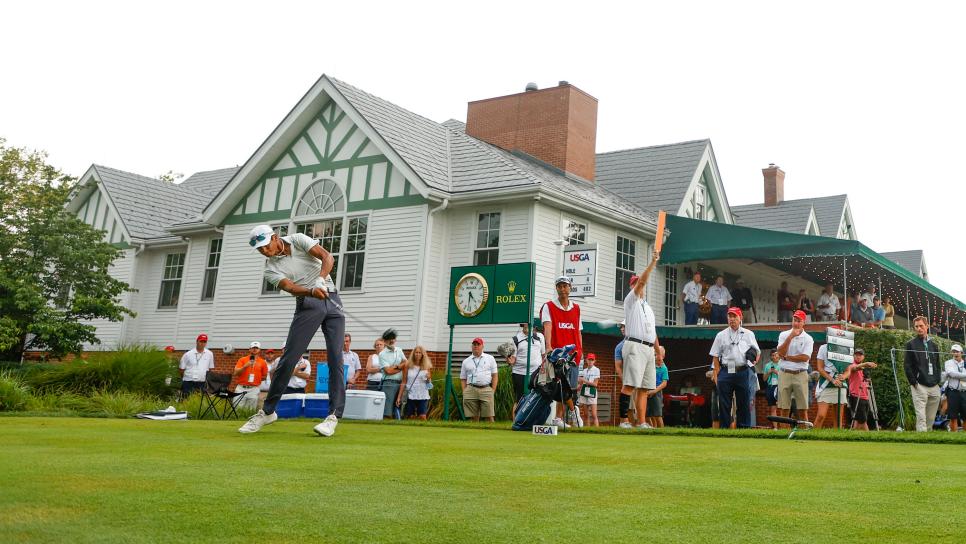Amateurs
Traditionalists won't like the creative way some U.S. Amateur golfers are attacking Oakmont

Travis Vick is one of several players at this week's U.S. Amateur who is getting creative with how he's attacking Oakmont.
Chris Keane
OAKMONT, PA. — If you’ve been watching any of the 121st U.S. Amateur this week at Oakmont Country Club—in between thunderstorms that have interrupted play each of the past three days and washed out the original schedule of play—you might have noticed something surprising for the best amateur golfers in the world: A lot of them seem to be blowing their drives into the wrong fairways.
Mind you, that’s not mighty Oakmont giving players the driving yips. Rather, it’s today’s modern players figuring out a strategic way to navigate the brutish course.
Throughout the week players have noted it’s not so much Oakmont’s traditionally gnarly rough that’s concerned them, but its menacing fairway bunkers. Avoid them at all costs, has been the mantra of many.
To do that several players have chosen to take alternative lines off the tees, the lack of trees on the W.C. Fownes brute after more than 12,700 were removed during restorations over the past decade providing clear paths for the creative-minded.
After burying a 26-foot birdie putt on the 18th hole to square his second-round match against David Nyfjall on Thursday, U.S. Walker Cup standout Ricky Castillo confidently returned to the first tee for extra holes and proceeded to rip his drive left into the ninth fairway—just as he planned. It set up an easier second shot with the pin tucked back right. Castillo hit his approach to 12 feet and just missed the birdie putt that would have ended the match, before closing things out on the 21st hole.
Texas sophomore Travis Vick is another player who’s been pouring over Oakmont’s yardage book to find alternative routes to play the course. During the week, he has hit it in the ninth fairway off the first tee, the 11th fairway off the 10th (right hole locations on the green are much more accessible when hitting your drive left, and the green is easier to see), and the 10th fairway off the 11th (this allows players to avoid the penalty area that runs through the fairway and causes them to take less club off the tee playing the traditional way).
In his second-round match against teammate Parker Coody, Vick also hit his tee shot on the 14th hole down the 12th fairway. “[The pin] was kind of tucked front right, so the smart thing to do was take it down 12,” Vick said. “That way I had 90 yards with a clear angle.” It left him 90 yards to the hole, which set up a par that won the hole and gave him the lead for good.
“They’ve all been smart plays,” Vick said, who knocked off Coody, 3 and 2, after beating former U.S. Junior champion Preston Summerhays, 2 and 1, in the first round.

Off the first tee at Oakmont, Ricky Castillo is aiming for the ninth fairway to set up what he believes is an easier approach shot.
Chris Keane
Arguably the play that might be the most sacrilege for traditionalists is watching competitors power their drives left over the church pew bunkers on the par-4 third hole. Miss the fairway on the fourth hole, and you’re playing from more friendly rough than if you missed your drive right while playing the hole conventionally.
This isn’t an entirely new phenomenon at the U.S. Amateur. Five years ago at Oakland Hills, competitors on the 18th hole faced a stout par 4 (converted from a par 5 for members) playing 496 yards from the back tee with a fairway narrowed by multiple bunkers on the left and right sides. The tight drive was tricky enough that some golfers choose turning right on the tee box and playing down the adjacent 10th fairway.
At Oakland Hills, U.S. Amateur Championship director Ben Kimball had no problem with the players attempting to be resourceful. Similarly, Kimball says he’s OK with players choosing alternative lines at Oakmont.
“It shows you how smart and intuitive these players are to figure out what’s the best possible route to get the ball in the hole," Kimball said. "I don’t fault them for that. It’s a little challenging manging the people and keeping everybody safe. I think if the conditions were a little different, maybe their strategy wouldn't have been the same. But because it's so soft, maybe it changed their mindset."